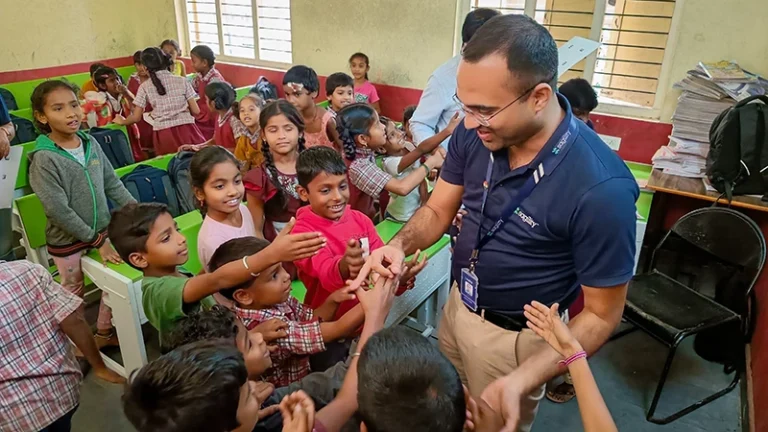Refractive error occurs when the eye cannot clearly focus on images, resulting in blurred vision1. Globally, uncorrected refractive errors (URE) are the main cause of visual impairment2. Uncorrected refractive error can result in lost education and employment opportunities, lower productivity and reduced quality of life.
The four most common refractive errors are:
- myopia (nearsightedness): difficulty in seeing distant objects clearly.
- hyperopia (farsightedness): difficulty in seeing close objects clearly.
- astigmatism: distorted vision resulting from an irregularly curved cornea, the clear covering of the eyeball. Both distance and near objects appear blurred and distorted.
- presbyopia: as we age, the lens of the eye becomes harder and less elastic, which leads to difficulty in reading or seeing at arm’s length. This is common for people over the age of 40.3
Refractive errors can be easily corrected. A simple eye examination and a pair of prescription eyeglasses can transform a person’s life. Refractive errors can also be treated with contact lenses or refractive surgery such as laser surgery.
Providing Eyeglasses
We work with local partners in South Asia and Africa to bring diagnosis and optical services to people with refractive error, at little or no cost to them. We establish vision centres at strategic locations within the community, where people can go for an eye exam and be fitted for a pair of custom eyeglasses. Customers who can afford to pay for eyeglasses help offset the cost for those who cannot afford to pay, which allows us to help more people and enables our vision centres to become self-sustaining.
Community outreach and education also play an important role in eliminating uncorrected refractive error. Through door-to-door surveys, school screenings and screening camps, we are able to identify those with vision problems and refer them to the nearest facility for care.
Operation Eyesight is also a proud member of the International Agency for the Prevention of Blindness’s Refractive Error Coalition. This coalition aims to eliminate uncorrected refractive error by the year 2050, ensuring everyone who needs eyeglasses and associated services has sustainable and permanent access, and that they can afford them.
How You Can Help
A $20 donation can help provide a new pair of prescription eyeglasses for at least one person. Please donate today to give the gift of sight to a child, woman or man in need.
Click below to read stories of lives transformed thanks to donors like you
Information retrieved March 2021 from:
1 Blindness and vision impairment: Refractive errors, WHO
2 World Report on Vision Executive Summary, WHO
3 Uncorrected Refractive Error, IAPB



